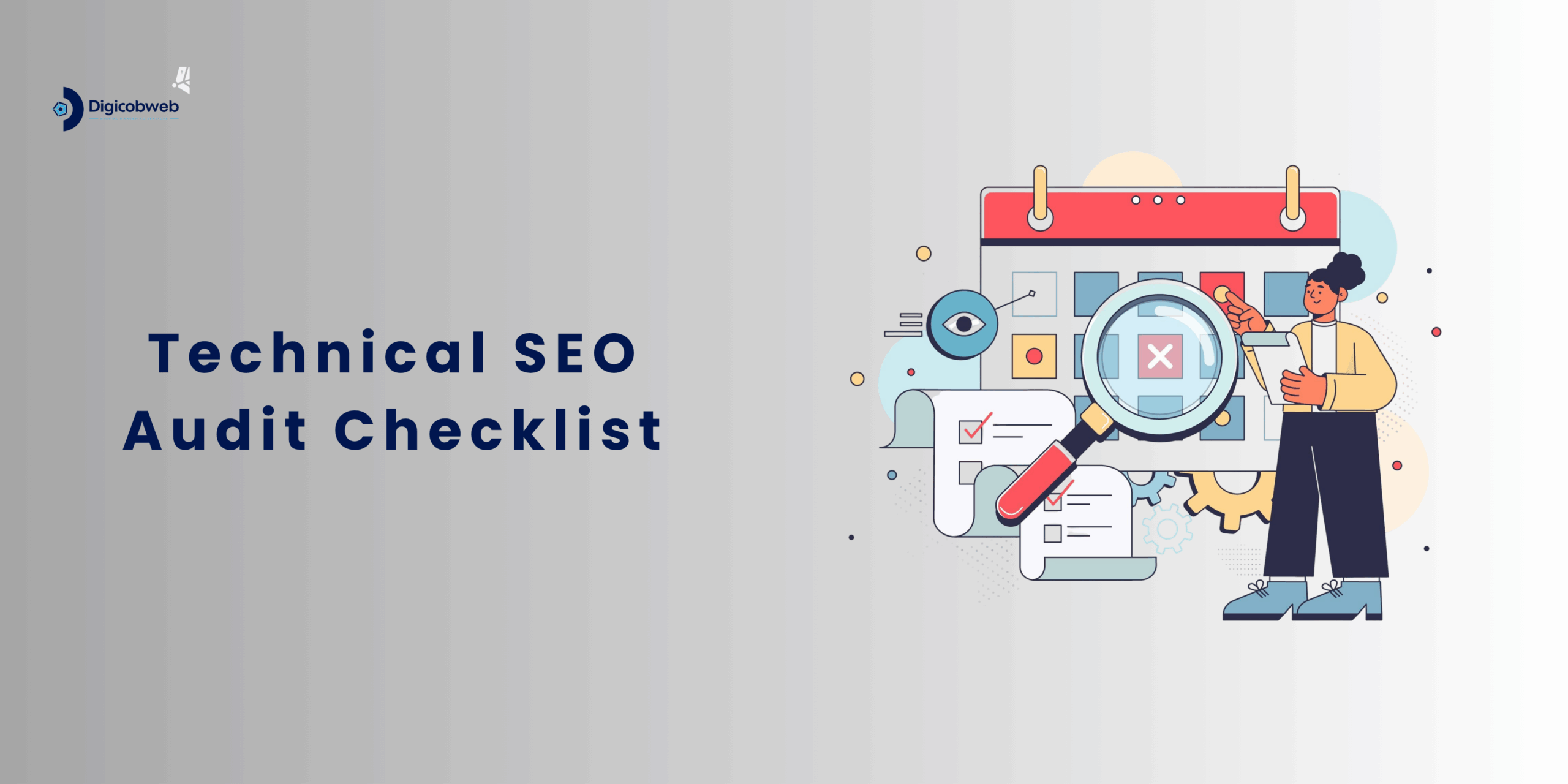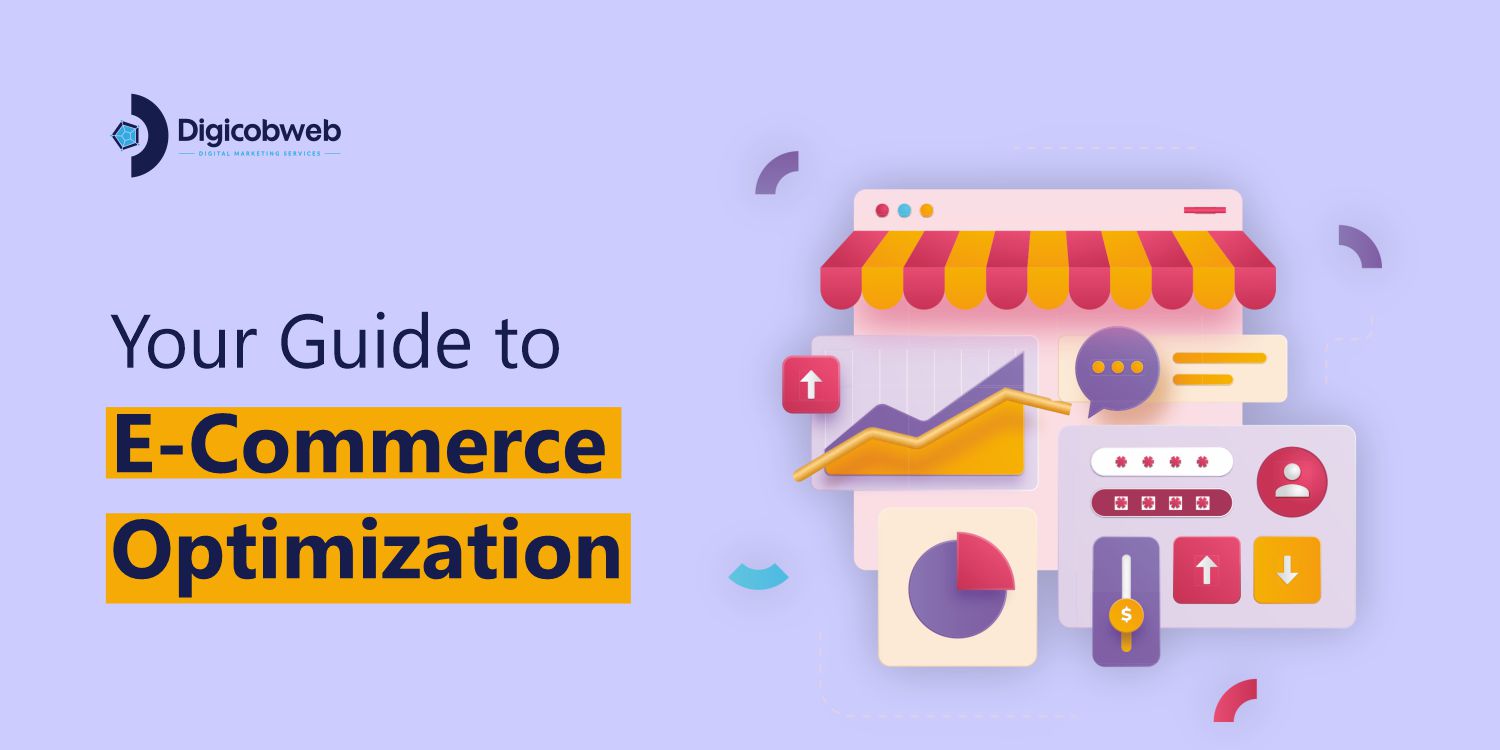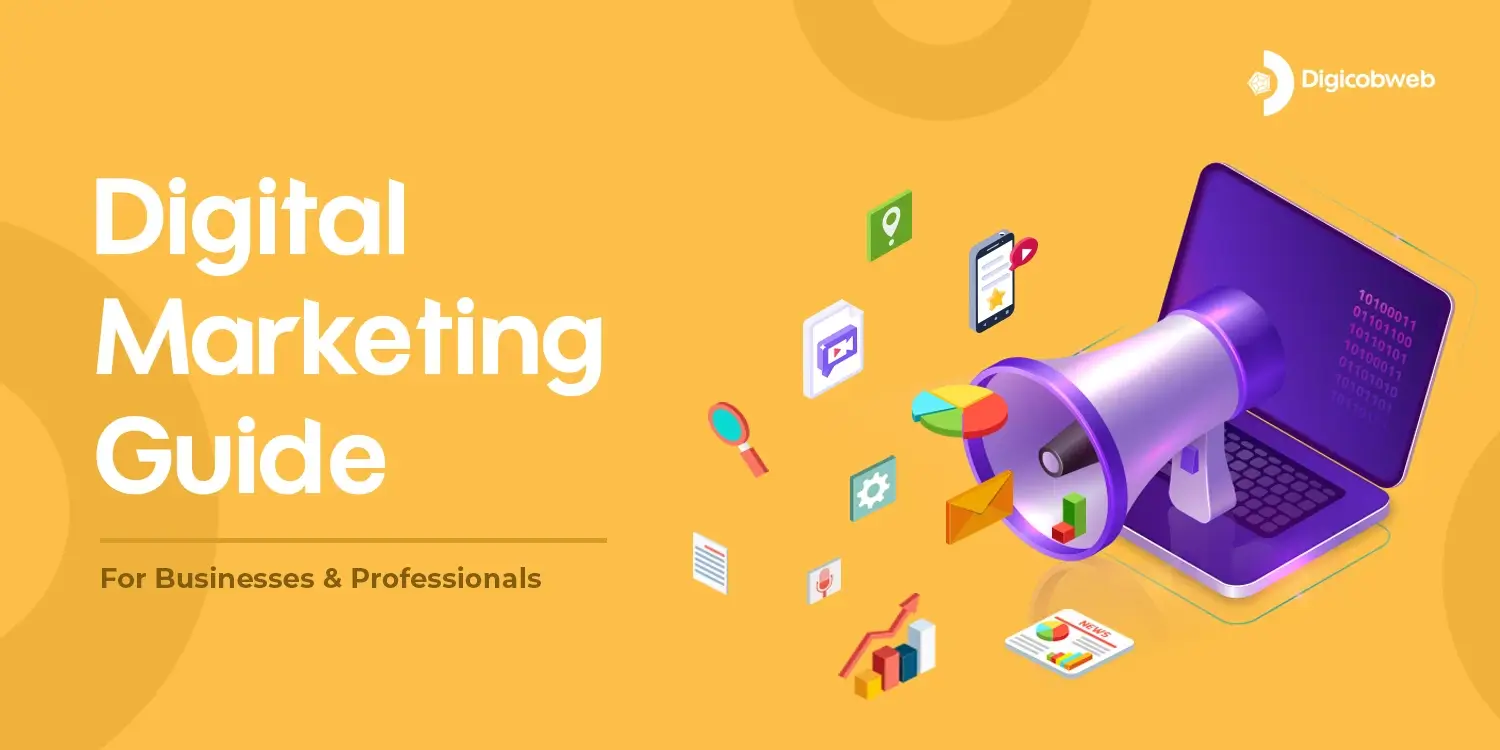
In this blog, you will learn what is digital marketing, the history of digital marketing, and the types of digital marketing strategies.
We will also explore the difference between traditional marketing and digital marketing, digital marketing’s importance for businesses, the duties of a digital marketer, and how we can do digital marketing with result-oriented outcomes.
Our “Digital Marketing Guide” will help you reach more people online as a professional and also assist your company market to groups and sub-groups within your larger range of audiences.
Introduction to Digital Marketing
Let us discover what digital marketing is in the current scenario. Digital marketing, also known as online marketing, denotes all online marketing activities used to enable company businesses.
Businesses use online channels like social media, search engines, email, and other web portals to connect with existing and potential client bases. This scenario even comprises interactions through text and multimedia communication mediums.
Sometimes, even an experienced inbound marketer might say that inbound marketing and digital marketing are the same. However, there are slight variances.
So, what is digital marketing? By having discussions with marketers across the globe, I have learned a lot about how digital marketing activities are practically comprehended across the world.
The most proficient digital marketers understand how every digital marketing campaign backs its all-encompassing objectives. And relying on the milestones of their marketing strategy, digital marketers can support a comprehensive campaign through accessible free and paid channels. Let us explore the history of internet marketing.
History and Evolution of Digital Marketing
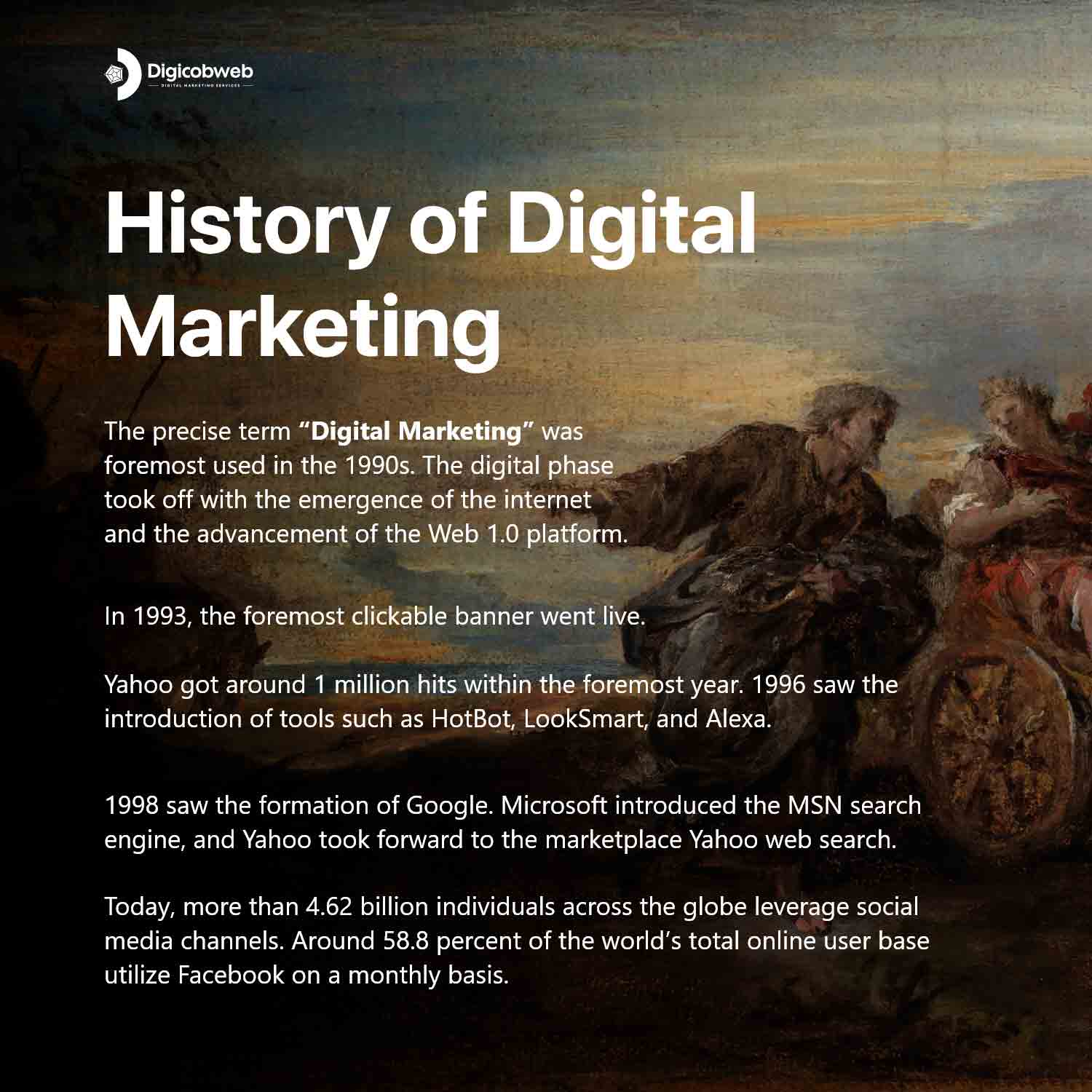
The precise term “Digital Marketing” was foremost used in the 1990s. The digital phase took off with the emergence of the internet and the advancement of the Web 1.0 platform.
This platform enabled users to find the data and information they needed but did not allow them to share this data on the web.
Till then, marketers globally were still uncertain about the digital platform. They were not definite if their new tactics would work since the online world had not yet seen extensive deployment.
In 1993, the foremost clickable banner went live, and this led to the commencement of the shift to the digital age of marketing. The year 1994 further saw innovative technologies entering the digital market. The same year, Yahoo was introduced.
Yahoo got around 1 million hits within the foremost year. 1996 saw the introduction of tools such as HotBot, LookSmart, and Alexa.
1998 saw the formation of Google. Microsoft introduced the MSN search engine, and Yahoo took forward to the marketplace Yahoo web search.
The digital marketing space saw its primary sharp flow in 2006 when search engine traffic was reported to have grown up to about 6.4 billion in a month.
Then came Web 2.0, which enabled users to engage with other users, professionals, and businesses. By 2004, there was a blast in the number of web portals, which meant that Google’s index included 8+ billion website pages.
Today, more than 4.62 billion individuals across the globe leverage social media channels. Around 58.8 percent of the world’s total online user base utilize Facebook on a monthly basis.
Around 433 million people utilize Pinterest each month to search for ideas and stir their succeeding purchases. The most used social networking sites for digital marketing are LinkedIn, Facebook, and Twitter.
Relation Between Marketing and Digital Marketing
Digital marketing assists you reach a greater audience than you could through traditional marketing channels and targeting the precise prospects who are most likely to purchase your product or service.
In addition, when we consider traditional marketing vs. digital marketing, digital marketing is often more cost-efficient than traditional promotions and allows you to track success on a daily basis.
The major difference between traditional marketing and digital marketing is the intermediate process by which an audience engages with a marketing message.
While traditional marketing leverages traditional media such as magazines and newspapers, digital marketing leverages digital channels, like social media sites or web portals.
Different Types of Digital Marketing
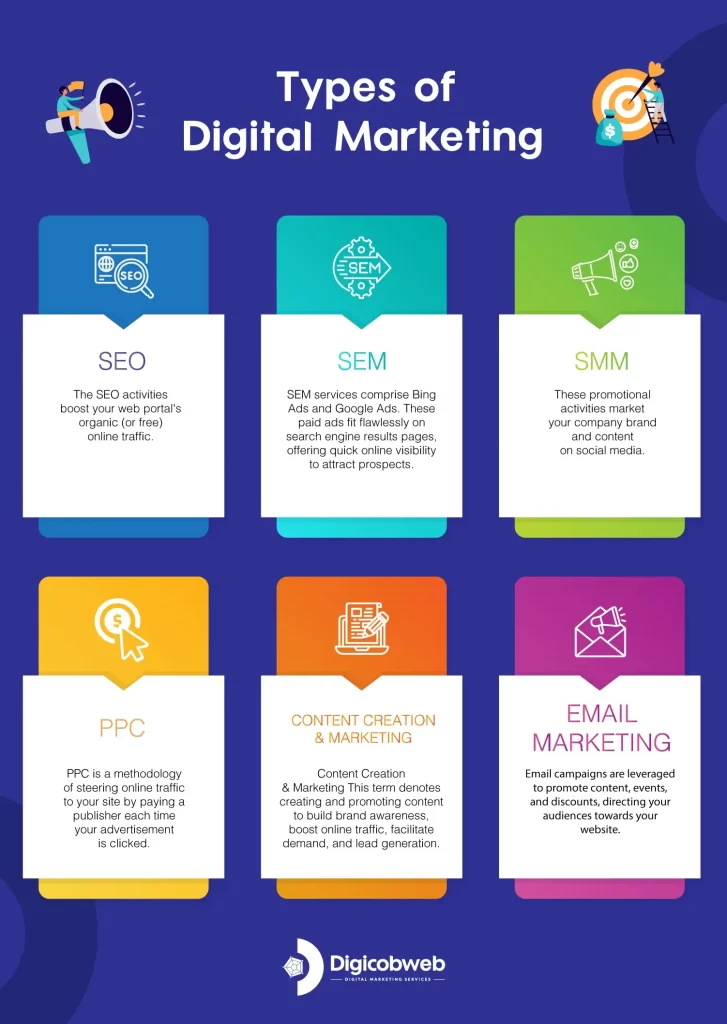
1. Search Engine Optimization (SEO)
The SEO activities boost your web portal’s organic (or free) online traffic. This is the procedure of optimizing and enhancing your site to “rank” higher on search engine results pages (SERPs).
The channels that aid from SEO comprises websites, blogs, articles, eBooks, white papers, case studies, and infographics.
Around 72 percent of internet marketers state that content creation is their utmost effective SEO tactic. There are several approaches that enable SEO and bring qualified internet traffic to your site. These comprise:
On-page SEO:
This SEO category focuses on the content that exists “on the page” of a website. By researching and spotting keywords for their search volume, you can answer queries for readers and rank superior on SERPs those queries generate.Off-page SEO:
This SEO category focuses on all activities executed “off the page” when optimizing your web portal. These activities generate inbound links, also called backlinks.
More online publishers that connect to you and their higher “authority” impact your keywords rankings. By writing original guest posts or republishing your content with tweaks on these publishing sites, you can receive the backlinks you require to rank your website on search engines.Technical SEO:
This SEO category focuses on the backend of your site and how you have coded your web pages. Image compression, structured data, and CSS file enhancements are all significant aspects of technical SEO that can boost your site’s loading speed, an essential ranking factor considered by search engines.
2. Social Media Marketing
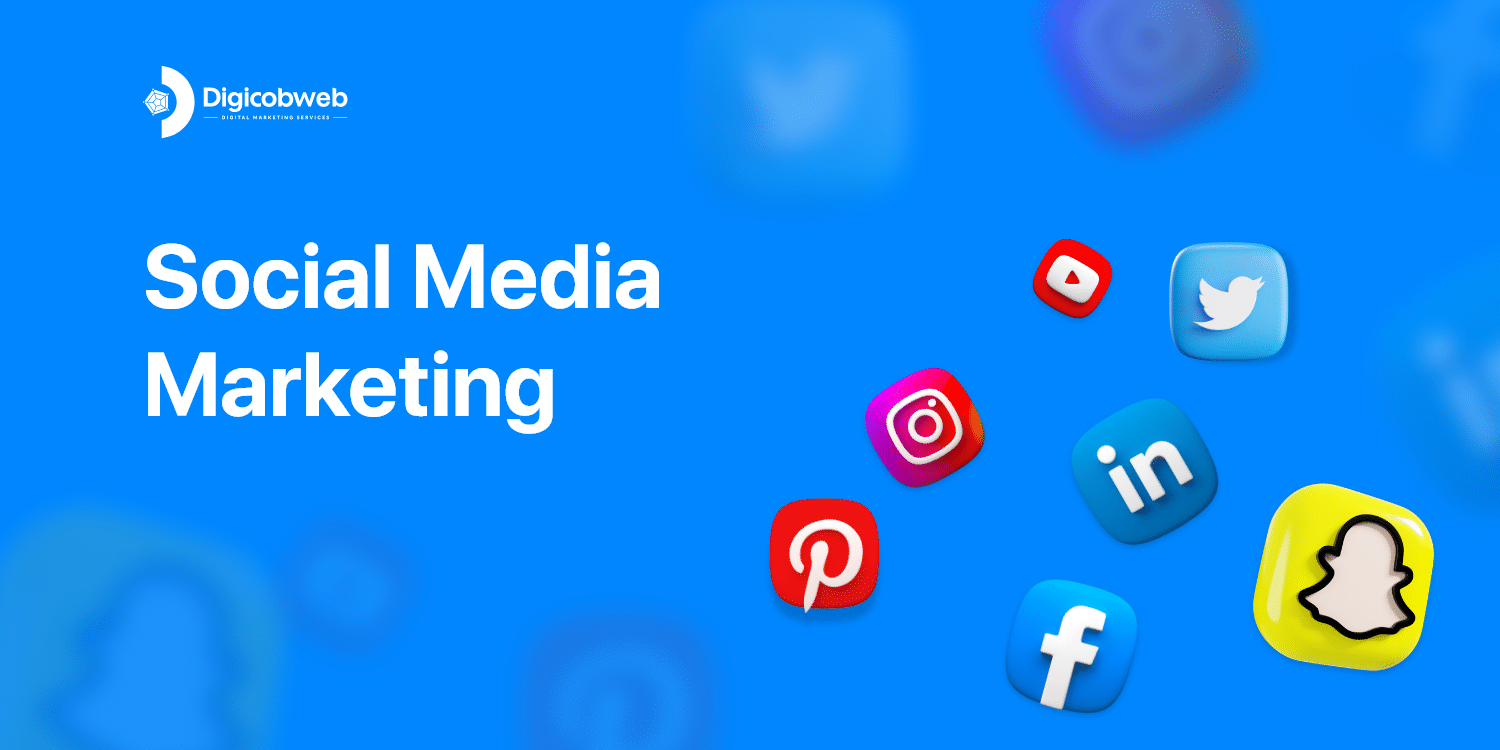
These promotional activities market your company brand and content on social media channels to boost awareness, steer digital traffic, and generate qualified business leads.
You can connect multiple social media channels in one place through tools such as HubSpot. With this approach, you can effortlessly schedule content for numerous channels and track analytics.
Along with linking social media accounts for posting, you can blend your social media inboxes to get your messages in a single place.
The channels you can leverage in social media marketing comprise:
- Snapchat
3. Search Engine Marketing (SEM)
When a probable lead is searching for a product or service related to yours, it is an excellent opportunity for your business to enable digital promotions.
Paid ads and SEO are effective strategies for marketing your company to capitalize on those futuristic leads.
Nevertheless, search engine marketing is another approach to boost web traffic by placing paid advertisements on search engines.
SEM services comprise Bing Ads and Google Ads. These paid ads fit flawlessly on search engine results pages, offering quick online visibility to attract prospects.
4. Content Creation and Marketing
This term denotes creating and promoting content to build brand awareness, boost online traffic, facilitate demand, and lead generation.
The channels that can play a significant part in your content creation and marketing strategy comprise:
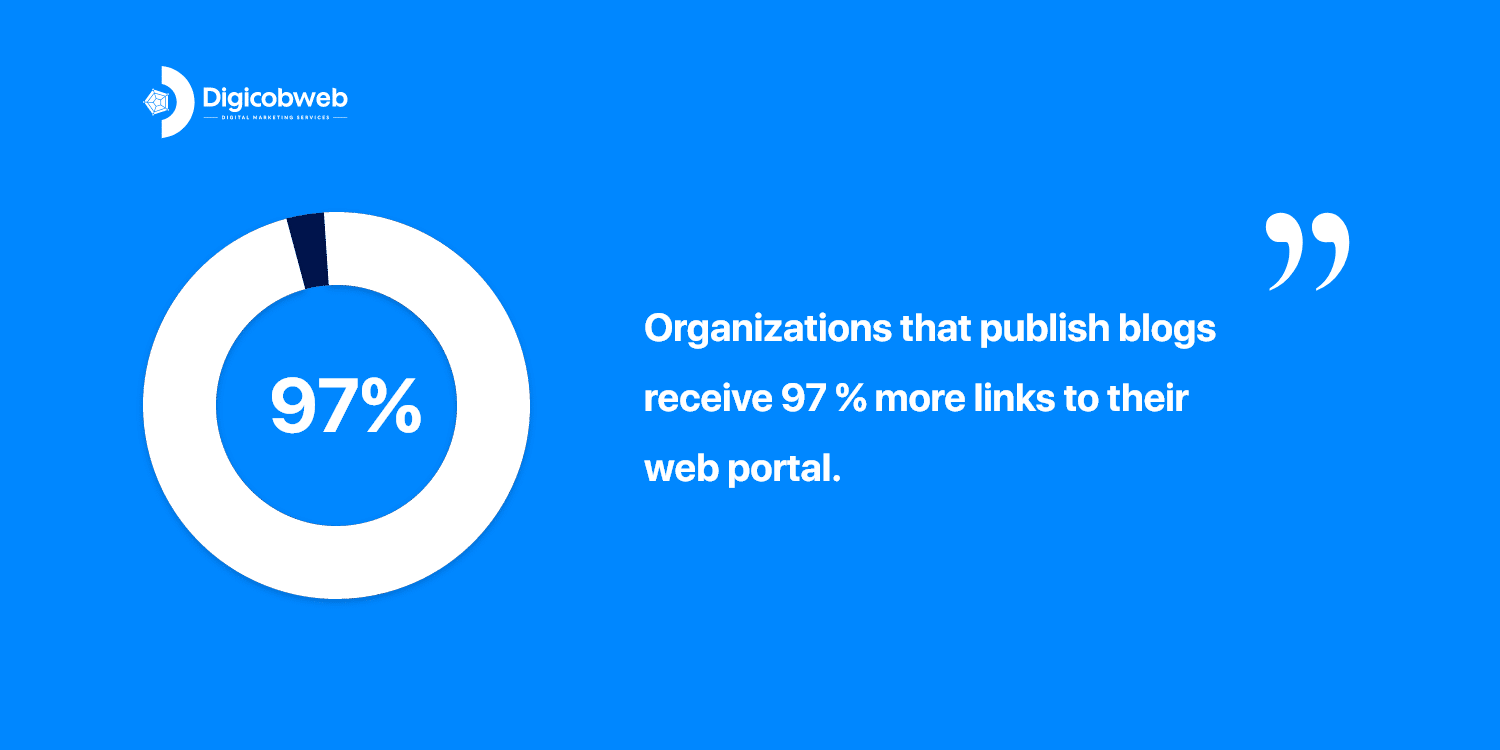
-
Article/Blog posts:
Writing and publishing blogs on a company blog and guest blogging assists you craft industry expertise and generating search traffic for your business. Organizations who blog receive 97 percent more links to their web portal.
-
Whitepapers and eBooks:
Whitepapers and eBooks assist in educating your online visitors. It enables you to exchange content for a reader’s contact details, yielding leads for your business and moving prospects via the set buyer’s journey.
-
Infographics:
Your audience often wants you to showcase, not tell. Infographics are a category of visual content that assists online visitors in visualizing an idea or concept you wish to help them explore and learn.
-
Audio or visual content:
As a business or professional, you can easily create and share content digitally as a video or audio to broaden your potential audience.
5. Pay Per Click (PPC)
PPC is a methodology of steering online traffic to your site by paying a publisher each time your advertisement is clicked.
One of the most used digital marketing categories of PPC is Google Ads, which enables you to pay for top slots on Google. Other paid channels where you can leverage PPC comprise:
- Paid advertisements on Facebook
- Twitter Ads and promotional campaigns
- LinkedIn’s sponsored messaging
6. Email Marketing
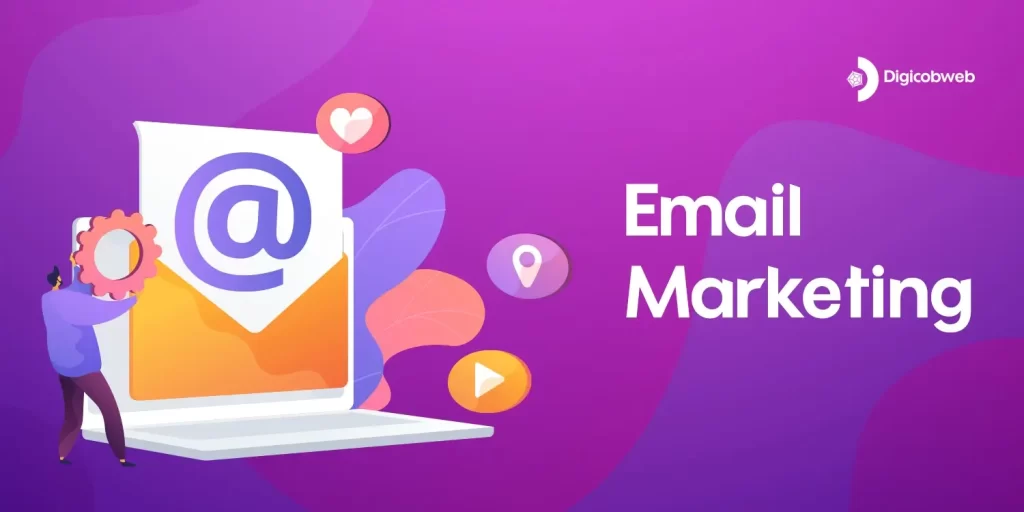
Email campaigns are leveraged to promote content, events, and discounts, directing your audiences towards your website. Approximately 45 percent of companies send their leads one email every week.
The categories of emails you can send in email marketing campaigns comprise:
- Content subscription newsletters.
- Services introductory and follow-up emails
- Emails to visitors who downloaded your content.
- Client and partner onboarding emails.
- Running promotional and loyalty program campaigns.
- Emails for demand generation and client nurturing.
Importance of Digital Marketing in Business
What is digital marketing and why is it important? Digital marketing involves crafting client personas to spot your audience’s requirements and creating applicable online content. You can apply digital marketing to any business, sector, or industry.
However, that does not mean all companies should use a similar digital marketing strategy. The importance of digital marketing for small businesses may differ from enterprise companies.
B2B Digital Marketing
Suppose you are business-to-business (B2B). Here, the function of your digital marketing strategy is to entice and convert your qualified leads for your sales professionals through your web portal and to back digital channels.
So, you can center all your digital marketing activities around online lead generation in this scenario.
Beyond your corporate website, you will preferably concentrate on business-focused digital channels such as LinkedIn, where your audiences are spending their time online.
B2C Digital Marketing
Now, suppose you are a company that is business-to-consumer (B2C). In that scenario, your digital marketing activities should draw people to your web portal and make them turn customers without ever requiring speaking to a sales professional.
Here, you are less likely to concentrate on ‘leads’ in their conventional sense and more probable to create an accelerated consumer’s journey, from when someone lands on your site to when they make a buying decision.
For B2C organizations, digital marketing channels such as Instagram and Pinterest are more valued than business-focused online platforms.
Real-life Example of Successfully Implementing Digital Marketing Strategy
Domino’s is a good digital marketing example to discover how knowing new digital technologies and acting swiftly can pay out.
Domino’s Anyware is a digital tool engrossed not on the product itself, however, even in how you order it. The digital software accessible on numerous online platforms is precisely voice-activated, tied with an AI proficient in interpretation and thoughtful regarding what you want in a food order.
It enhanced sales, for sure, but the prime return from this strategy lies in digital brand building. Being known as a brand that grips technology and digital marketing is a big benefit, especially among younger audiences.
Digital Marketing Roles and Responsibilities
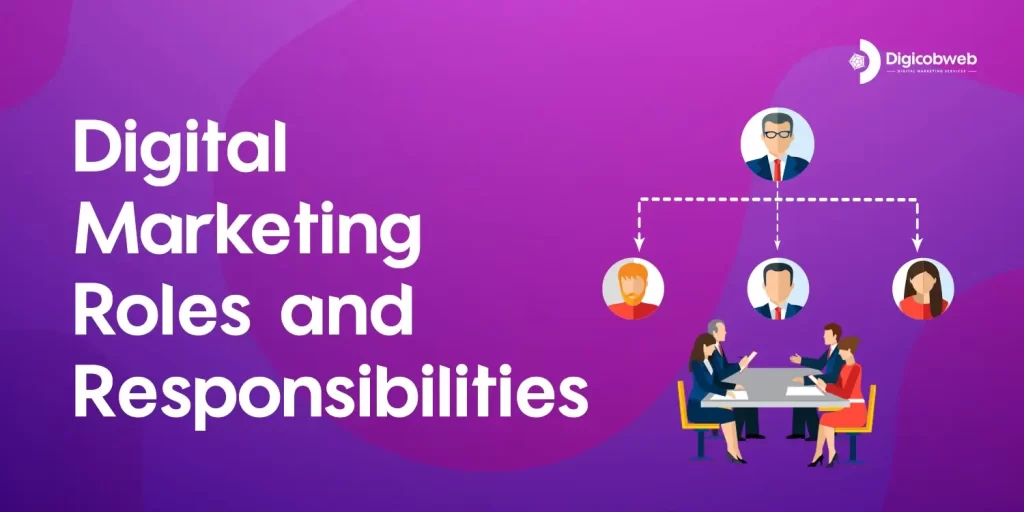
The digital marketer concentrates on various key performance indicators (KPI) for every channel so they can suitably measure the company’s performance across everyone.
Here are some instances of these professionals and their digital marketing duties:
1) SEO Manager & Executives
KPIs: Free and Organic traffic
SEO executives and managers get the business to rank higher on search engines to generate leads. They closely work with content generators to ensure their content performs well on search engines like Google, even if the organization posts this content on social media channels.
2) Content Marketing Experts
KPIs: Time spent on web pages, content-based online traffic, digital subscribers
Content marketing experts are digital content generators. They continually monitor the company’s blogging calendar and build a content strategy that comprises video and audio content.
These executives work with professionals in other divisions to ensure the success of digital campaigns on diverse channels.
3) Social Media Manager & Executives
KPIs: Impressions, follows, and shares
The role of a social media manager and executives is to create a posting schedule for the company’s written, audio and visual content.
These professionals work with content marketing experts to craft a strategy for posting content on different social channels.
So, one of the reasons a digital marketing career is so thrilling is that the domain is continuously maturing as diverse platforms are launched. A digital marketing professional is at all times scoping out trends, exploring different industries, and discovering market impacts.
How to do Digital Marketing for Businesses
What is digital marketing and let’s explore how it is executed.
1. Define and state marketing goals.
The foremost step to digital marketing success is identifying and defining your goals as you will craft your strategy differently, relying on those goals.
2. Identify and spot target audiences.
You might consider reaching new audiences through social media channels to boost brand awareness. One of the prime assistance of digital marketing is the opening to target precise audiences, however, you must first identify your right target audiences.
3. Craft a budget for every digital channel.
You will need to determine a budget depending on the elements you want to include in your digital marketing strategy.
You do not need much budget to focus on inbound methodologies such as SEO, social media, and content generation.
As part of inbound marketing, you will create high-quality content that will draw your target audience in, and the only investment you will require is your timely efforts.
Nevertheless, 46 percent of companies reported that they desire to boost their overall budget on content creation investments in 2022.
4. Balance paid and free digital tactics.
A digital marketing strategy likely requires both free and paid facets to truly be efficient. Initially, even if you spend minimally, you’re likely to see substantial outcomes if you build inclusive buyer personas to identify your audience’s needs and create superior quality digital content to convert them.
Nevertheless, if paid ads are part of your digital tactics, then the positive outcomes might come even more rapidly. And the prime example is that Google Pay-Per-Click Ads have the highest ROI of around 200 percent.
Eventually, it is suggested to emphasize structuring both your organic reach and paid marketing campaigns leveraging sustainable success.
When in hesitation, try both, and reiterate your procedure as you explore which channels, paid or free, bring the best results for your business.
5. Generate engaging and interactive content.
Once you know your targeted audiences and have a fixed budget, it is the right time to create personalized content for the diverse digital marketing channels you will leverage.
This content includes articles, blogs, social media posts, PPC ads, sponsored content, emails, newsletters, and more.
Your content should be thought-provoking for your audiences, as the reason to generate marketing content is to boost brand awareness and enhance lead generation.
6. Enhance digital assets for mobile.
Mobile marketing is now an integral and significant part of digital marketing. With a boost in smartphone usage, time invested across digital media channels is too increasing worldwide.
Around 51 percent of total global shoppers have performed a digital purchase with a smartphone. This means it is crucial to enhance your digital ads, website pages, social media pictures, and other digital resources for mobile devices.
If your business has a mobile application that facilitates users to interact with your company brand or shop your products, your application too falls under the digital marketing umbrella.
Those prospects interacting with your organization online through mobile devices require to have the same optimistic experience as they would have on the desktop.
This means enabling a mobile-friendly or responsive website design for your audiences is highly needed to make browsing approachable for those on mobile devices.
7. Perform keyword research.
Digital marketing is all about reaching your audiences by adapted content, all of which can’t materialize without precise keyword research.
Performing keyword research is significant for enhancing your website and content for SEO and making sure prospects can find your company via search engines.
Moreover, even social media keyword research can be supportive for marketing your products or services on numerous social media channels.
8. Reiterate based on the data and analytics.
Lastly, to produce an efficient digital marketing strategy for the long-term, it is essential your team explores and learns how to pivot based on data analytics.
For instance, it might be the scenario that your Instagram audience isn’t interested in your content anymore, while your Twitter audience loves what you are posting. You may want to reapply your Instagram strategy in light of this scenario. However, it might indicate that your audience prefers a different channel for consuming branded content.
Alternatively, possibly you find an older website page isn’t getting the online traffic it used to in the past. You might comprehend updating the page or withdrawing it completely to assure visitors find the newest, most applicable content for their business requirements.
Best Resources for Digital Marketing
You can also prefer to get digital marketing knowledge from industry experts and their content resources. Here are ten best digital marketing resources everyone should explore for their business, to know what is digital marketing and to learn digital marketing in depth:
- HubSpot
- HubSpot Academy
- Content Marketing Institute
- Copyblogger
- WordStream
- Search Engine Land
- Search Engine Watch
- Search Engine Journal
- Unbounce
- GrowthHub
Conclusion of our Digital Marketing Guide
So, now exploring our comprehensive “Digital Marketing Guide” you better know what digital marketing is and its components. Digital marketing offers businesses amazingly flexible opportunities for constant growth and maturity; however, it is up to you to take advantage of them.
Any business opportunity where you can get in touch with your audience is an opportunity to convert a qualified lead or acquire a client.
Digital marketing generates numerous opportunities by enabling you to reach your prospects via an extensive range of channels. Whether it is social media channels, your corporate website, email messages, or any online source, digital marketing is a priceless approach to endorsing your business services and products.
So, if you are seriously looking for a leading digital marketing service provider company to make a significant digital presence for your company, Digicobweb can help you.
We are here to deliver ethical digital marketing services to businesses who are really looking forward to makeover their existing and futuristic digital image.

